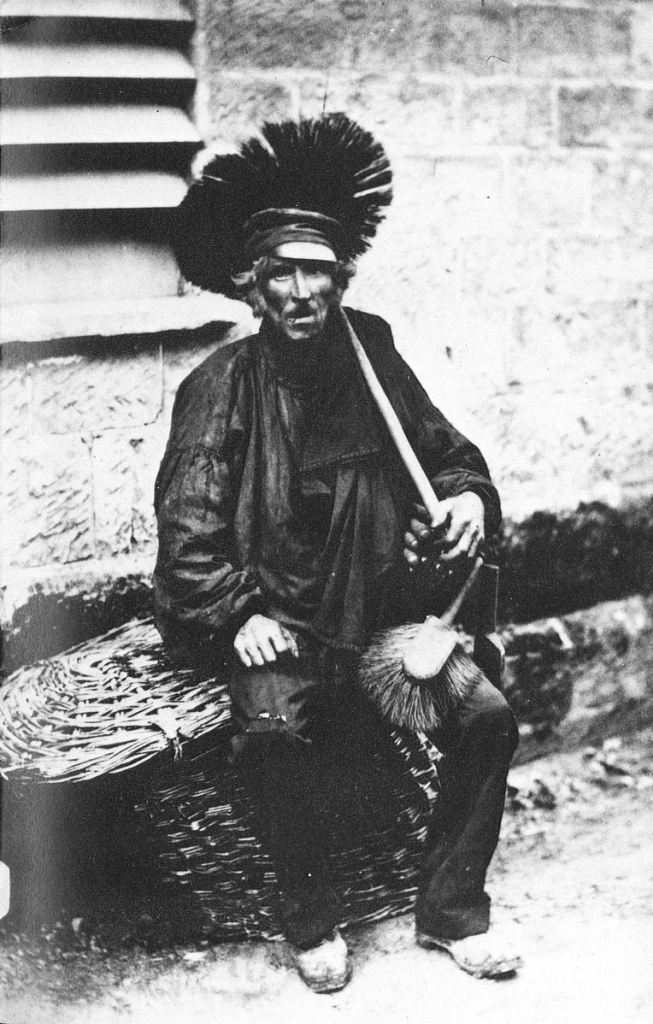
Chimney sweeping as a trade has existed for centuries, with the first chimneys appearing in Britain in the 13th Century. These chimneys would have essentially been a large shaft going up from a single-roomed dwelling, enabling an open fire which would have been in the centre of the room.
The chimney sweep we think of today, when we hear the term, is typically that of the character Dick Van Dyke plays in Mary Poppins.
After the Great Fire of London in 1666, chimney sweeps began to use young boys to aid their task, sending children – some as young as four – up the chimneys. Each flue was typically a small space, of about 9×14 inches in some cases. The chimneys would still have been hot from usage – and occasionally on fire owing to a build up of creosote.
The boys were supposed to the extinguish the fire.
In the early days of the profession, chimney sweeps were not paid for sweeping the chimney – they did that for free! In fact, sweeps made their money by selling the soot they swept out of the chimney. Soot was found to be a valuable fertilizer, and so selling it to farmers and gardeners was quite lucrative. Sweeps also worked out a way to compact the soot into bric- shaped blocks, which they then sold.
An adult chimney sweep would have been a master of his trade, and paid by the parish to apprentice orphans and paupers from the community into the trade.
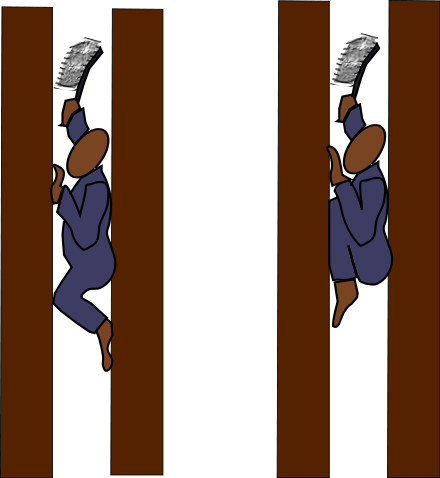
Right: a boy stuck and at risk
Often these boys would be paupers from the workhouse, and sent up the chimney naked – so as not to add additional flammable material. They would use their bare knees and elbows to ascend the tight space. The risks to the children were enormous – they could easily suffocate, or burn to death.
The children were also at a high risk of developing ‘sweep’s carcinoma’, or ‘soot wart’ – a type of cancer that developed due to their poor health and the fact that the children rarely washed, even when covered in soot.
Sweep’s carcinoma was essentially skin cancer of the scrotum, which occurred when warts caused by soot particles were not treated. The warts turned cancerous, then spread up and around the genital tracts and into the abdomen, becoming fatal. It was one of the earliest ailments that was linked directly to an occupation, leading to the creation of the term ‘occupational cancer’.
From about 1775 legislation began to appear to help regulate childrens’ working conditions. The Chimney Sweeps Act of 1788 limited the number of apprentices to each master, and sated that they had to be no younger than eight years old and have parental consent – but these new laws were frequently not enforced.
A man named Joseph Glass invented specialised brushes and canes for cleaning chimneys, and his basic designs are still in use today. These new tools, that had the potential to make the process easier, became available from about 1803, but despite this safer way of sweeping, many preferred to continue using the boys.
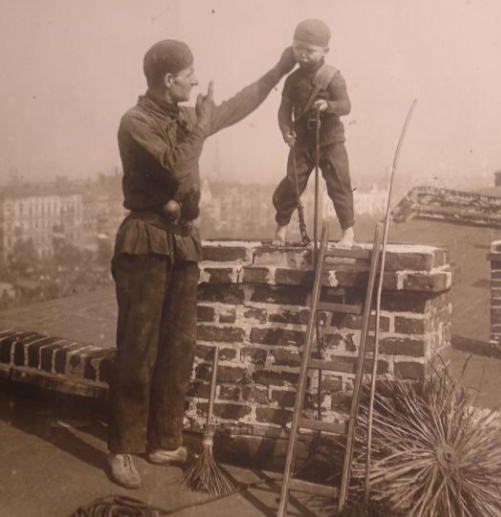
In 1817 a report to Parliament suggested the occupational hazards these boys faced were much more than just the risk of ‘chimney sweep cancer’, burns, bruises, and suffocation. The boys were also at risk of stunted and abnormal growth due to the contortion they endured; were generally neglected, had a risk of blindness due to infections in the eyes, and suffered asthma and other respiration issues.
By 1870, when the Education Act was passed, the boys’ welfare within the industry was still a concern. Some 15 years later in 1885 a law was passed to stop the use of children for chimney sweeping altogether.
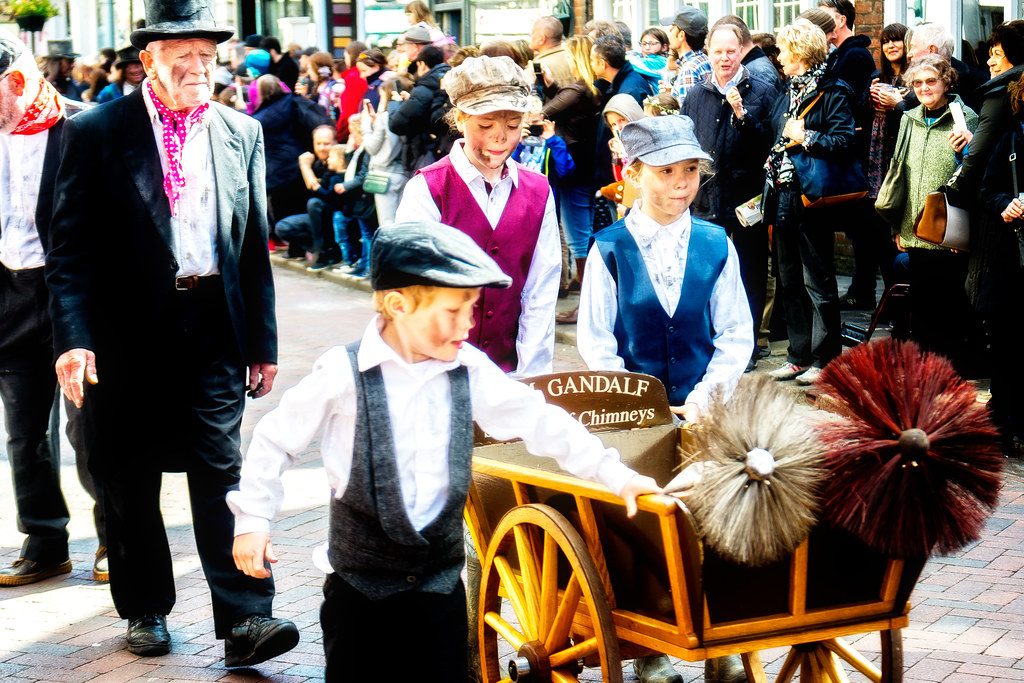
Traditionally, chimney sweeps had one day off a year – typically the first of May, or ‘May Day’, where they would parade through the streets. This chimney sweep tradition is still celebrated in Rochester, Kent; typically on the first May bank holiday weekend. The event is known locally as Rochester Sweeps’ Festival.
William Blake, an English poet that lived from 1757-1827 wrote two poems ‘The Chimney Sweeper’ relating to the plight of the children, which in 1965 were set to music by composer Benjamin Britten as part of his composition, ‘Songs and Proverbs of William Blake’.
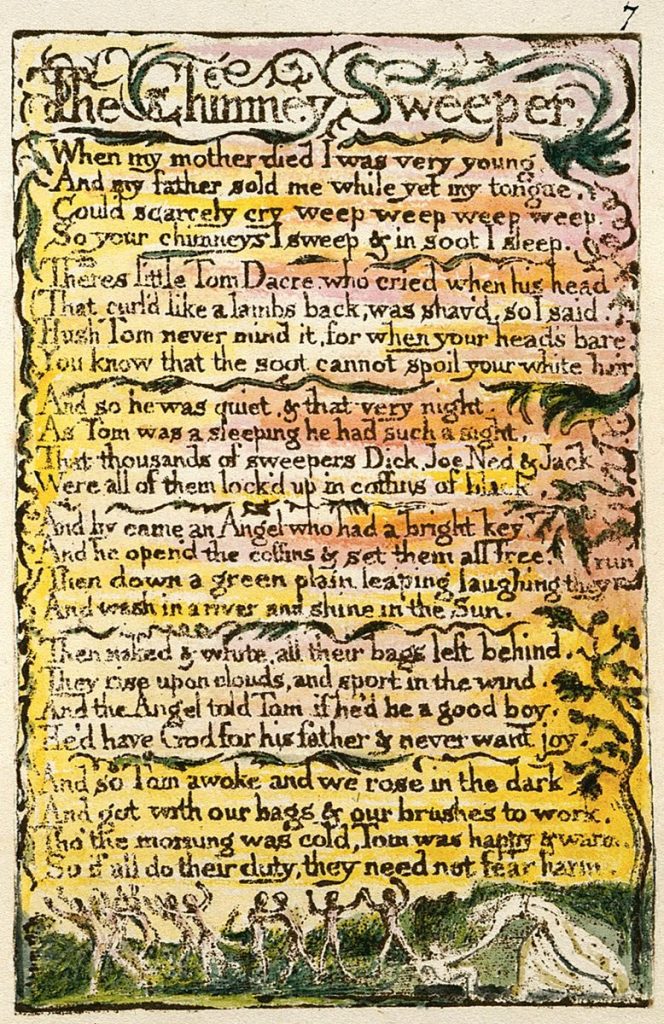
Songs of Innocence 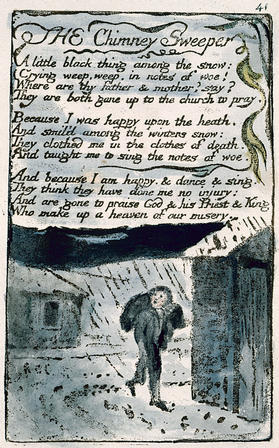
Songs of Experience
Songs of Innocence was written by Blake in 1789 followed by Songs of Experience in 1793. They can both be seen overleaf.
